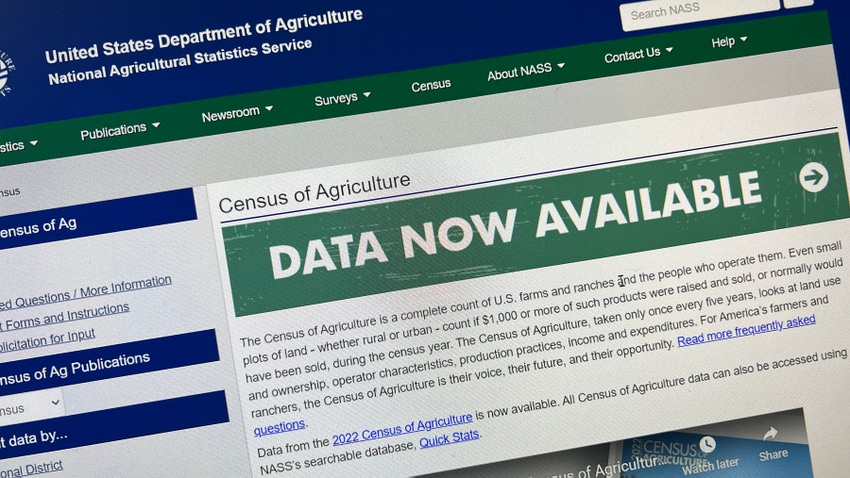
If you are like me and love ag stats, USDA gave us the best Valentine’s gift when it released the results of the 2022 Census of Agriculture on Feb. 13. It always reveals a lot of very interesting facts about our farm community.
With over 6 million data points collected, it is full of more information than most people care to consume. I’m one of the people who love the deep dive.
The census takes place every five years and is collected directly from producers themselves. It asks specific questions about farm size and the people involved. It tracks information by county, state and nationwide. When compared to previous years’ censuses, it can track changes and trends.
I don’t know that it is any surprise, but the 2022 census confirms the decline of the total number of farms in the U.S. – roughly 1.9 million - down 7%, compared to the 2017 census. It also shows the average farm size has grown in the last five years to 463 acres. Total acres of farmland in the U.S. have dropped 2%.
The survey also looks at the age of farmers, farm size, the race and sex of farmers, how many farmers have served in the military, and much more. This year, it included new questions about hemp production, precision agriculture and internet access.
The release announcing the results of the census noted that family-owned and operated farms accounted for 95% of all U.S. farms and operated 84% of farmland.
U.S. farms and ranches produced $543 billion in agricultural products, up from $389 billion in 2017. With farm production expenses of $424 billion, U.S. farms had net cash income of $152 billion. Average farm income rose to $79,790. A total of 43% of farms had positive net cash farm income in 2022.
A total of 153,101 farms and ranches used renewable energy producing systems compared to 133,176 farms in 2017, a 15% increase. The majority of farms (76%) with renewable energy systems reported using solar panels.
In 2022, 116,617 farms sold directly to consumers, with sales of $3.3 billion. Value of sales increased 16% from 2017.
The 105,384 farms with sales of $1 million or more were 6% of U.S. farms and 31% of farmland; they sold more than three-fourths of all agricultural products. The 1.4 million farms with sales of $50,000 or less accounted for 74% of farms, 25% of farmland, and 2% of sales.
So, is your head swimming yet? I’ve only just begun to dive into the numbers from the survey. USDA provides access to the results at nass.usda.gov/AgCensus. Deeper into the site they have infographics and closer looks at first-time producers and specialty crops.
Over the next few months USDA will release more data from the census and you can bet I’ll be digging through that data.
About the Author(s)
You May Also Like






